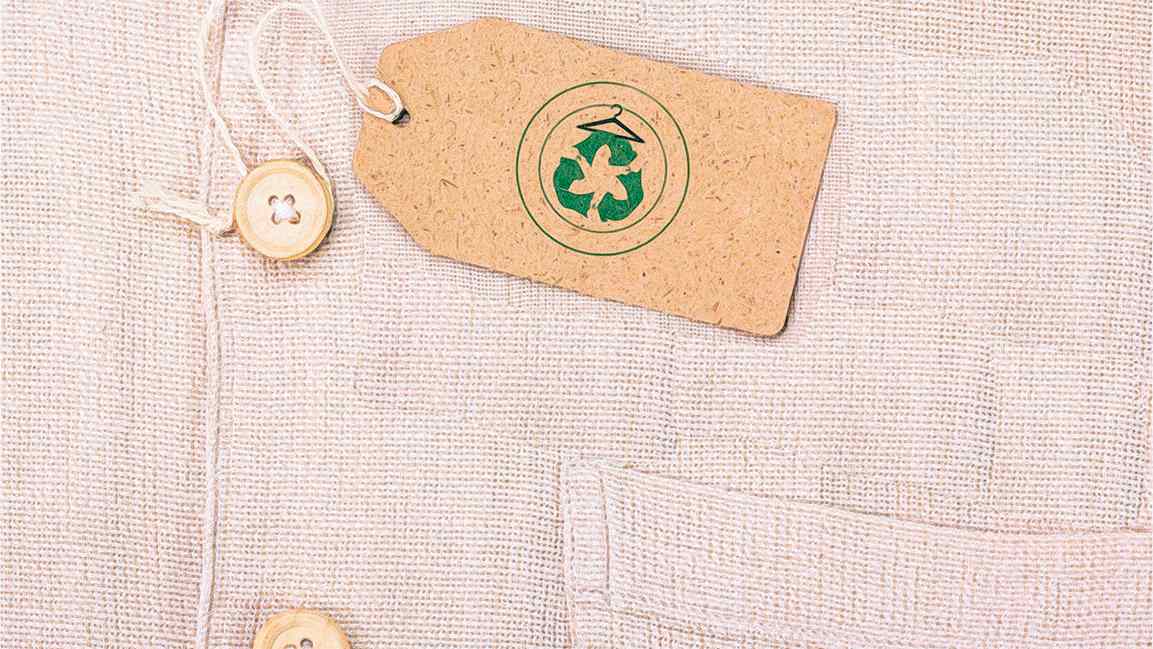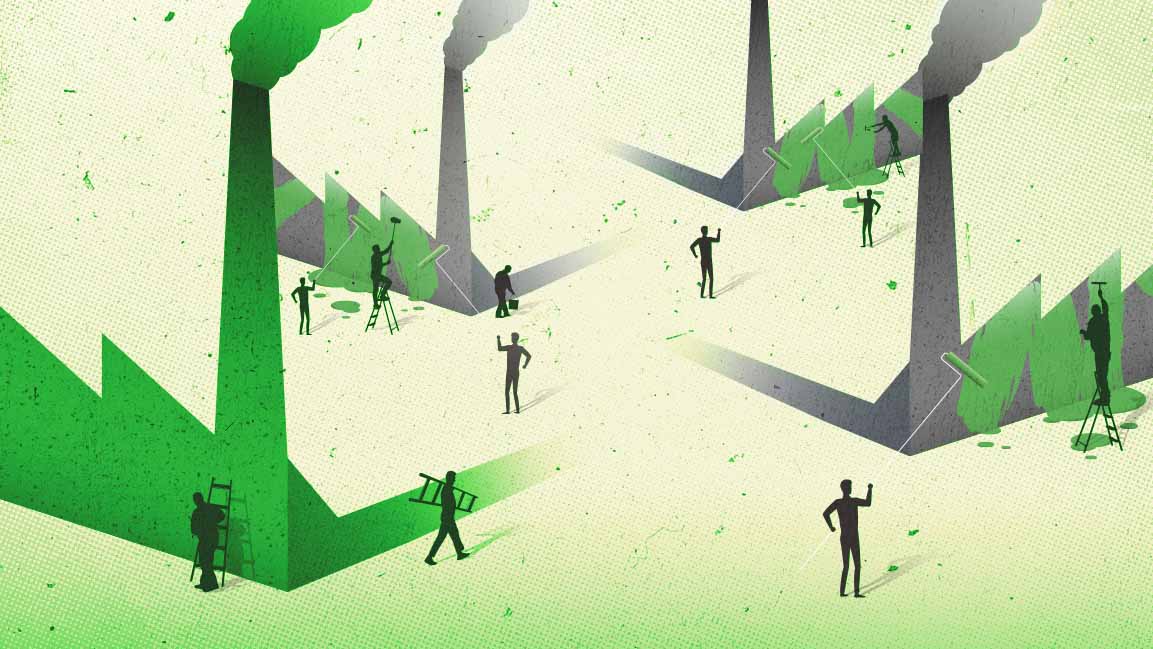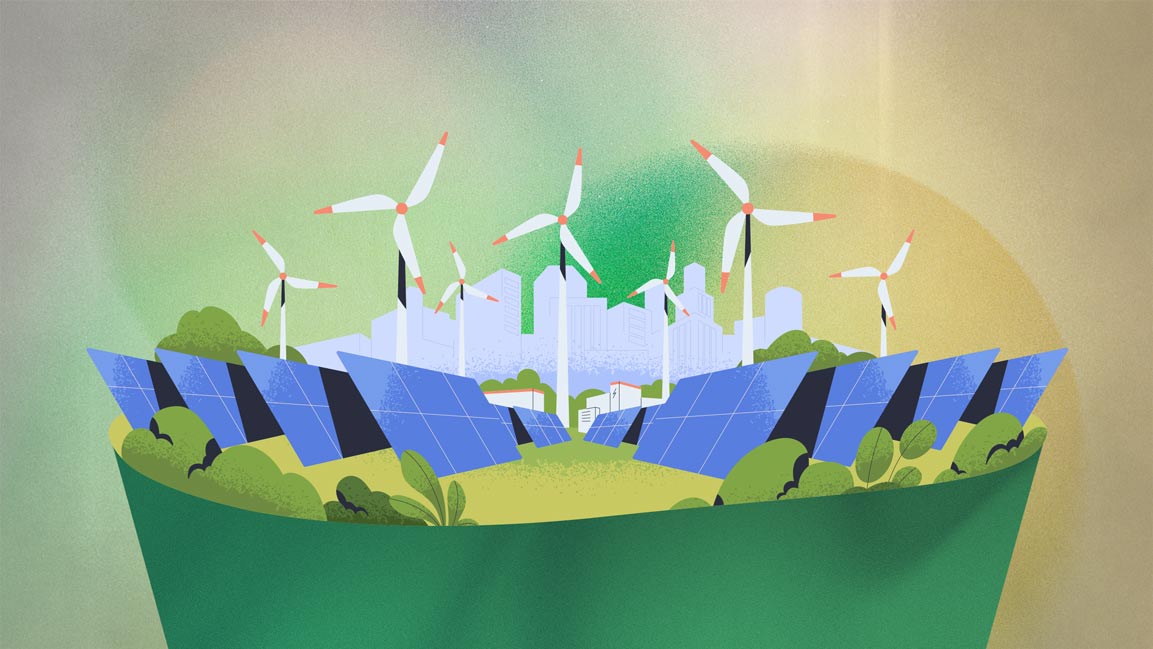- | 9:00 am
Can the Middle East slow down fast fashion?
As consumers’ desire for sustainable clothing grows, brands are striving to keep up with increasing demand for sustainable fashion practices, but more needs to be done.

As I scroll the website, I find the prices ludicrous – $10 for a shirt, $13 for a maxi dress, $35 for a formal dress… and so on. Everything looked enticing: there’s beautifully shot looks with trendy styles and color palettes seemingly similar to high-end brands but for a fraction of the price.
In short, the platform, like other fast fashion brands, thrived in giving the illusion of having found the holy grail of online shopping.
With textiles production and use increasing, so do its effects on climate, water and energy usage, and the environment. There’s no denying that the fashion industry has been significantly contributing to global environmental pollution – in 2018 alone, the UN Alliance for Sustainable Fashion found that the industry was responsible for up to 8% of global carbon emissions.
At a time when sustainability and the climate crisis are the main discourse of conversations, it seems paradoxical why fast fashion brands continue to gain popularity.
“I blame Instagram,” says Riham Hijazi, co-founder of Necess, a Lebanon-based sustainable clothing line using eco-friendly and innovative fabrics to create long-lasting designs. “The need for people to always have new and trendy fashion that will probably not be worn past that Instagram post has given rise to a crazy demand for clothing.” She continues, “Manipulating customers into must-haves and millions of new design drops created an overconsumption culture that will require a lot of awareness to battle.”
And it’s about to increase – the global fast fashion market was valued at $106 billion in 2022, and it’s forecasted to reach $185 billion by 2027, according to a study by Statistica.
For the most part, fast fashion dominates the retail market due to its ability to offer trendy, inexpensive, and easily accessible products, says Yara Ghouth, founder and CEO of Naseej Market, an online marketplace of locally made one-of-a-kind products from Saudi Arabia. “They often follow quick production cycles, bringing new designs to the market rapidly in response to current fashion trends. This fast-paced approach resonates with consumers who seek instant gratification and the latest styles at affordable prices.”
“There’s a lot of finger-pointing,” says Rina Saleh, founder of Qatar-based RSPR Concepts and Design, a sustainable brand with clothing and accessories made of recycled plastic bottles and antimicrobial fabric. “Consumers blame brands for paying low wages to workers. Brands say their clothing is cheap because that’s all consumers will pay. Activist organizations blame brands for following business models prioritizing profit and governments often just watch cautiously from the sidelines.”
COUNTERING THE HARMFUL EFFECTS
Sustainability is at the forefront of designers’ minds and brand’s objectives in Saudi, says Burak Cakmak, CEO of the Fashion Commission, one of the commissions working under the kingdom’s Ministry of Culture to lead the country’s fashion sector. Cakmak says the involvement of all stakeholders is crucial to countering the harmful effects of fast fashion, “We need to get to the root of the problem and will do this by researching cleaner, greener materials and technology, redesigning the fashion calendar, and changing consumer habits to minimize waste.”
The commission has initiatives such as the Saudi 100 Brands initiative, which features Saudi designers and made its mark at Paris Fashion Week 2023, strongly emphasizing sustainability. Cakmak notes that many of their brands have opted out of the traditional fashion calendar to prevent waste and avoid fueling excessive buying. “Instead, brands are opting to stick to custom orders based on the needs of their customers, guided by the Saudi event calendar.”
Today’s businesses have a distinct role in being accountable for a garment’s source, Hijazi points out. “It’s our responsibility to choose the kind of fabrics and garments that will last, that have good quality, and to try our best to offer them at a price that makes them appealing to people when compared to the fast fashion options.”
“For us, taking into account the scientific KPIs and guidelines being set globally is crucial. It’s very easy to greenwash, and many businesses do it intentionally or simply by thinking this is ‘green,’” says Hijazi.
A number of ventures have risen to encourage people to swap clothes, upcycle and buy pre-loved items to reduce fashion pollution and waste.
In a poll, Hubub found that one in six young people don’t feel they can wear an outfit again once it’s been on social media. This is one of the premises of Siz.ae, founded by Annabel Demana, a platform enabling women in the UAE to rent and lend designer clothes and bags.
“By enabling women to rent and lend their existing designer pieces, we extend the life cycle of fashion items and reduce the demand for new, quickly discarded garments,” says Demana. “This approach helps minimize waste and contributes to a more sustainable fashion industry.”
Another venture Bazaara, a resale fashion app that helps users buy and sell pre-loved fashion items, offers a second life for pre-owned clothing. Founded by Alyssa Mariano, the venture aims to reduce the demand for new clothing. “We also continue to look for ways to further decrease our own footprint, for example, encouraging our customers to reuse their packaging (or biodegradable packaging), and finding additional ways to optimize our courier routes to further reduce emissions.”
THE COST OF MAKING SUSTAINABILITY ACCESSIBLE
Industry experts call for improving transparency and traceability in textiles, garments, shoes and accessories – however, it comes at a price, and whether consumers are willing to shell out is another question.
In the State of Fashion in the Kingdom of Saudi Arabia 2023 report, data showed that 84% of survey respondents view sustainability as important to their customers. However, the Saudi market remains price sensitive, with 58% of industry respondents noting that customers would not be willing to pay more for a sustainable fashion product.
To bridge the gap, Cakmak notes the importance of ensuring that environmentally sustainable clothing is available at various price points. The concept of cost-per-wear is also worth implementing. “It’s a way for people to see the true value of sustainable clothing and calculate why it’s worth spending more on better quality items.”
Norhan El Sakkout, founder of Saqhoute, an Egypt-based slow fashion brand offering women’s ready-to-wear collections based on deadstock material, says that transparency is essential to bridge the awareness and information gap between brands and clients. “By building a strong, honest and reliable communications channel and after-sales service, they can be closer to the heart of the operation, [then] their perception and connection to a garment piece transform.”
El Sakkout’s venture is also a founding member of the Sustainable Fashion Alliance MENA, a group of fashion designers, brand owners, stylists, and industry players passionate about social, cultural, and environmental sustainability. It offers a platform to share ideas and concepts, discuss and collaborate on projects and events that educate and raise awareness around sustainability in fashion.
“This is the transformation in a mindset that blew my mind away since starting Saqhoute – people are more aware, smarter, and hungry for knowledge on how to change their behavior, and consume better,” says El Sakkout.
Ghouth suggests that businesses can make sustainable options more affordable by optimizing production processes, sourcing materials responsibly, and seeking partnerships promoting sustainable practices. “Offering transparent information about the production process and the positive impact of choosing sustainable products can build trust and motivate consumers to make conscious choices,” she adds.
RAISING AWARENESS AMONG CONSUMERS
Industry experts agree that educating consumers is crucial – from raising awareness of the benefits of more environmentally sustainable items and shopping habits to highlighting fast fashion’s unethical labor practices and harmful environmental impacts of.
“As an industry, it’s our job to lead the way and educate consumers and emerging designers about how to reduce fashion’s environmental impact,” says Cakmak. Besides hosting sustainability-focused conferences, the commission recently signed a memorandum of understanding with KAUST to establish an R&D for sustainable materials and textile technology to scale up solutions in KSA and across the world.
For government organizations to support eco-friendly businesses and organizations is a way of promoting change, too, says Saleh. For example, her brand is currently working with the Qatar Olympic Committee on an eco-friendly capsule collection for their delegates to wear to the 2023 Asian Games. Not only does it help her venture grow, but it also sets a distinct example to people about the importance of making eco-friendly choices. “Getting government organizations is integral to educating the public and initiating change.”
Collaboration amongst policymakers and industry stakeholders is key. Mariano concludes, “More regulation and incentives for the industry is needed, for sustainability and ethical labor practice purposes.”







































